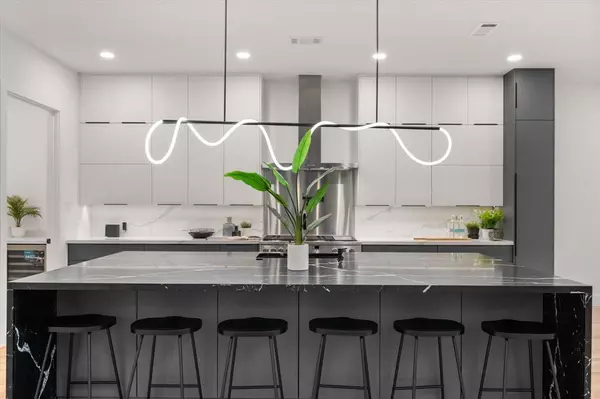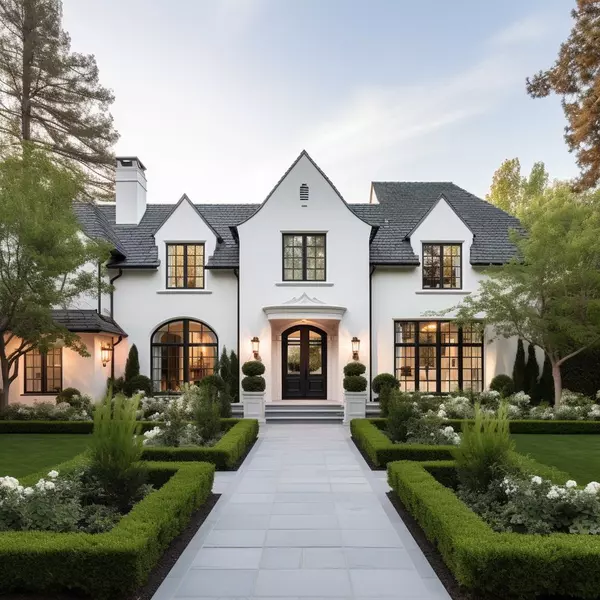Pricing Strategy for Historic & One-of-a-Kind Luxury Properties in DFW
 Pricing a truly unique luxury property—whether it's a historic estate, an architectural masterpiece, or a one-of-a-kind compound—requires a fundamentally different approach than valuing typical luxury homes. These exceptional properties defy standard valuation methods and demand specialized expertise.
Pricing a truly unique luxury property—whether it's a historic estate, an architectural masterpiece, or a one-of-a-kind compound—requires a fundamentally different approach than valuing typical luxury homes. These exceptional properties defy standard valuation methods and demand specialized expertise.
The Challenge of Valuing the Irreplaceable
When your property is unlike anything else on the market, traditional comparative market analysis falls short. How do you price a 1920s Mediterranean villa designed by a renowned architect? What's the value of a modern architectural statement home that took five years to build with custom everything? These properties require a nuanced, multifaceted approach to pricing.
Understanding Your Property's Unique Value Drivers
Architectural Significance Properties designed by notable architects (think Cliff May, O'Neil Ford, or contemporary masters) carry inherent value beyond their physical attributes. Architectural pedigree attracts specific buyers who appreciate design heritage and are willing to pay premiums for it.
Historical Importance Homes with documented history—former residences of notable figures, properties that played roles in local history, or structures listed on historical registries—appeal to buyers seeking more than just a house; they're purchasing a piece of Dallas-Fort Worth heritage.
Irreplaceable Features Custom millwork, hand-carved stone, imported materials, old-growth timber framing, original stained glass, or master craftsman details that simply cannot be replicated today add significant value that algorithms cannot quantify.
Land and Location For historic estates, the land itself may be the primary value driver—particularly oversized lots in now-developed neighborhoods where similar parcels no longer exist. A two-acre estate in Highland Park represents land that will never be recreated.
Story and Legacy Some properties have compelling stories that resonate with buyers. The narrative around your property—how it was built, who lived there, what makes it special—becomes part of the marketing and valuation equation.
Valuation Approaches for Unique Properties
Comparable Sales Analysis (Modified) While perfect comparables may not exist, examining sales of properties that share certain characteristics provides baseline data. This might include:
- Other architecturally significant homes in DFW
- Historic properties in similar neighborhoods
- Estates with comparable land value
- Properties in similar price tiers with unique features
Cost Approach Considerations For properties with irreplaceable features, understanding replacement cost provides valuable context. What would it cost to recreate custom millwork, import similar materials, or commission comparable craftsmanship today? Often, these costs far exceed what buyers will pay, but they inform the conversation.
Income Approach (When Applicable) For unique properties with income-generating potential (historic estates with event venue possibilities, properties with guest houses suitable for short-term rental), income potential may factor into valuation.
Market Positioning Strategy Sometimes pricing unique properties requires accepting that you're targeting a specific buyer profile willing to pay for specific attributes. Your pricing strategy must account for:
- The size of your potential buyer pool
- How long it may take to find the right buyer
- Competition from other unique properties
- Current luxury market conditions
Common Pricing Pitfalls to Avoid
Overvaluing Based on Personal Investment What you spent on custom features may not translate dollar-for-dollar to market value. Buyers have their own visions and may not value every custom element equally.
Ignoring Market Realities Even the most exceptional property must align with what luxury buyers can and will pay in current market conditions. Economic factors, interest rates, and buyer psychology affect unique properties too.
Pricing Above the Market's Absorption Capacity If your property is priced significantly above recent luxury sales, you're expanding time-on-market and potentially signaling to buyers that you're not serious or realistic about selling.
Failing to Account for Renovation Needs Historic properties often require specialized maintenance and updates. Modern buyers may need to invest significantly in systems, climate control, or modernization while respecting historical integrity.
Discounting Too Steeply for Uniqueness While unique properties may have smaller buyer pools, drastically underpricing out of fear of limited appeal can leave significant money on the table. The right buyer will pay appropriately for truly special properties.
The Strategic Pricing Process
Comprehensive Property Assessment Document every unique feature, historical element, architectural detail, and irreplaceable characteristic. Professional photography, videography, and even historical research may be warranted.
Market Research and Analysis Examine recent sales across multiple data points:
- Luxury properties in your neighborhood
- Architecturally significant homes throughout DFW
- Historic properties in comparable markets
- Unique estates that took extended time to sell and final sale prices
Buyer Profile Identification Who is the likely buyer for your property? Understanding whether you're targeting:
- Architecture enthusiasts
- History preservationists
- Luxury buyers seeking distinction
- Families wanting a legacy home This shapes both pricing and marketing strategy.
Positioning Decision Determine whether to price:
- Aggressively to generate immediate interest and potential multiple offers
- At market based on best-available comparables
- Aspirationally to allow room for negotiation while targeting the absolute highest-end buyer
Flexibility and Timeline Considerations Unique properties often require patience. Your pricing strategy should reflect your timeline flexibility and willingness to wait for the ideal buyer versus generating quicker activity.
Marketing Implications of Pricing Strategy
Your price point directly impacts marketing approach. Properties priced at record-setting levels require exceptional marketing—professional media, targeted advertising to high-net-worth individuals, architectural publications, and potentially national or international exposure.
When to Adjust Your Strategy
If your unique property isn't generating expected activity within 60-90 days, reassessment is warranted. Consider:
- Market feedback from showings
- Agent feedback from the luxury brokerage community
- Changes in comparable property activity
- Shifts in broader market conditions
The Value of Specialized Expertise
Pricing unique and historic luxury properties successfully requires an agent who:
- Understands architectural significance and can articulate value to buyers
- Has experience with historic properties and their unique considerations
- Maintains relationships with luxury buyers, collectors, and design enthusiasts
- Can craft compelling narratives around exceptional properties
- Knows when to be patient and when to adjust strategy
Your historic or one-of-a-kind property deserves a pricing strategy as unique as the home itself—one that respects its significance while positioning it effectively in today's market.
Do you own a historic estate or architecturally significant property in DFW? Let's discuss a customized pricing and marketing strategy that honors your property's uniqueness while achieving your goals.
Schedule a Consultation
Curtis Rose
Dallas-Fort Worth Luxury Real Estate Agent
Specializing in Highland Park • Preston Hollow • Luxury Estates
📞 859-358-9304
📧 Curtis@CurtisRoseDFW.com
🌐 www.CurtisRoseDFW.com
📸 www.instagram.com/CurtisRoseRealtor
Categories
Recent Posts











